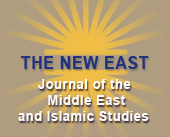Comics as a Tool for Shaping Collective Consciousness in the Hands of Jihadists and Anti-Jihadists
Elad Giladi
Arab comic strips are a flourishing genre with a widespread readership spanning the political and ideological spectrum, both within the Middle East and beyond. This form of media constitutes an interesting case study as it combines cultural and political elements from both the Middle East and the West that are not always compatible. Arab comic strips are a counter-reaction to Western comics but, at the same time, are an authentic local creation.
In addition to providing a form of entertainment and being a distinct product of popular culture, comics are a very important and efficient tool for shaping collective consciousness, a function not overlooked by many groups seeking to propagate their own ideas. Because of the great popularity comics enjoy among children and teenagers, among other reasons, Jihadists began using this media for indoctrination purposes. Recently, they have made extensive use of the Internet to distribute comic strips that encourage "Jihad against foreign conquerors and martyrdom for the sake of Islam" as well as that accuse the Jews of child trafficking and other heinous crimes. Conversely, comics are also used in the Islamic world to educate against terror and extremism and to promote a moderate and tolerant Islam
Among the questions that I examine in this article are the following: How did the comic strip genre evolve and gain legitimacy in the Muslim world? What elements has it borrowed from the Western world and from Japan, and what local characteristics has it developed? What makes comics such an efficient tool for shaping collective consciousness? Above all, I investigate how this media’s potential is harnessed by Jihadists and anti-Jihadists alike as a means of indoctrination and/or education.

